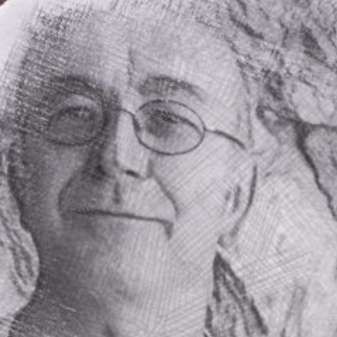Edinburgh's Queen's Hall, combining centre stalls with a horseshoe of pews on two levels, boasts a wonderful chamber music acoustic. The attentive Sunday afternoon audience for the SCO Chamber Concert had no difficulty making out every nuance of the small forces present. Jane Atkins (viola), Maximiliano Martín (clarinet) and Llŷr Williams (piano) offered an ingeniously tailored programme of late Brahms and what, happily, appears to be mid-life Kurtág.
Hommage à Robert Schumann, Op. 15d, for clarinet, viola and piano (1990) by György Kurtág (b.1926) was the only piece to feature the trio of players. One might struggle to discern the elements of homage – or indeed Schumann – in this piece. A glimpse of the titles of the work's six movements (such as 'Eusebius: the Delimited Circle…' or '…and again Florestan’s lips tremble in anguish…': not included in the otherwise excellent programme notes) might have shed some light on this. Sharing the instrumentation of Schumann's own Märchenerzählungen (Fairy Tales), the trio alternates fast and slow movements – the first five of which support Kurtág's reputation as a master of Webernesque brevity. The closing bars of the tiny second movement contain one of the most beautiful harmonic wrong-footings I can recall hearing in contemporary music. This was exquisitely handled by the trio. The fairy-tale element really registered in the closing 'Farewell (Master Raro discovers Guillaume de Machaut)', a meeting between the imaginary character who mediated Schumann's alter-egos (Florestan and Eusebius) and the Medieval composer. This processional movement, which outlasts the previous five combined, was unfurled with great pace and suspense. The third live Kurtág piece I have experienced in seven months, this excellent performance has inclined me more than ever to seek out further performances.
Brahms' Clarinet Sonatas, Op. 120, were the last of his chamber compositions to be published. He had announced his retirement from composition but was so taken with the playing (and friendship) of Richard Mühlfeld that he again reached for his pen. The first of these, in F minor, he also adapted for viola – and this version opened the concert. Tempting as it might be to highlight sepulchral introspection, such as the very tender second movement which Jane Atkins and Llŷr Williams delivered movingly, the work also features moments of animated optimism such as the Allegretto grazioso and the closing Vivace. The ensemble was impressive in this performance, particularly in the Andante un poco adagio, where viola and piano swapped roles in the material which opened the movement. The wide, descending intervals in these passages created a perfectly poised balance of movement and stillness.
Sonata no. 2 in E flat from this opus is, at three movements, the shorter work. Clarinetist Maximiliano Martín's beautiful tone was instantly reassuring in the work's soaring opening movement. Again, the ensemble was very impressive and the balance of Brahms as lyricist and dramatist was never in better hands.
A participant in every item on the programme, Llŷr Williams was also featured in a selection of Brahms' Intermezzi. Three from Brahms' Op. 118 collection (dedicated to Clara Schumann) highlighted many facets of this impressively versatile young player: no. 1 in A minor gave free rein to impassioned romantic expression; no. 2 in A major allowed the tenderly lyrical side of his talent to shine; no. 6 in E flat minor contrasted searching, almost pulse-free playing with more assertive, dynamic expression. Williams finished this with Brahms' Rhapsody in E flat major, Op. 119 no. 4. A sensitive chamber musician, Williams' performance of this chiming piece highlighted his more gregariously virtuosic talents. Even in the most dense passages, the texture was wonderfully clear and fleet-of-foot. Amazingly, given the workload he had shouldered, Williams left the stage at the end of the concert looking as fresh and composed as he had appeared at the outset.


